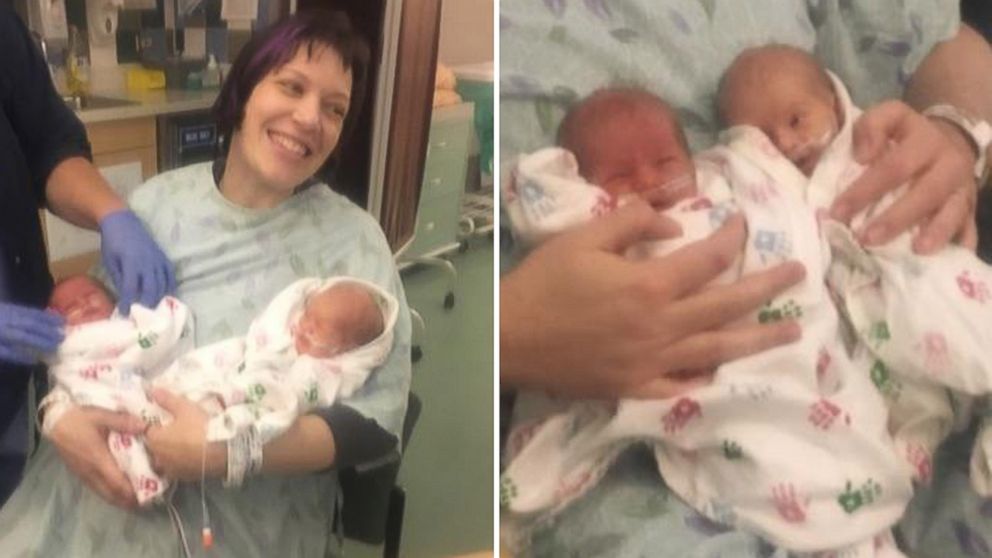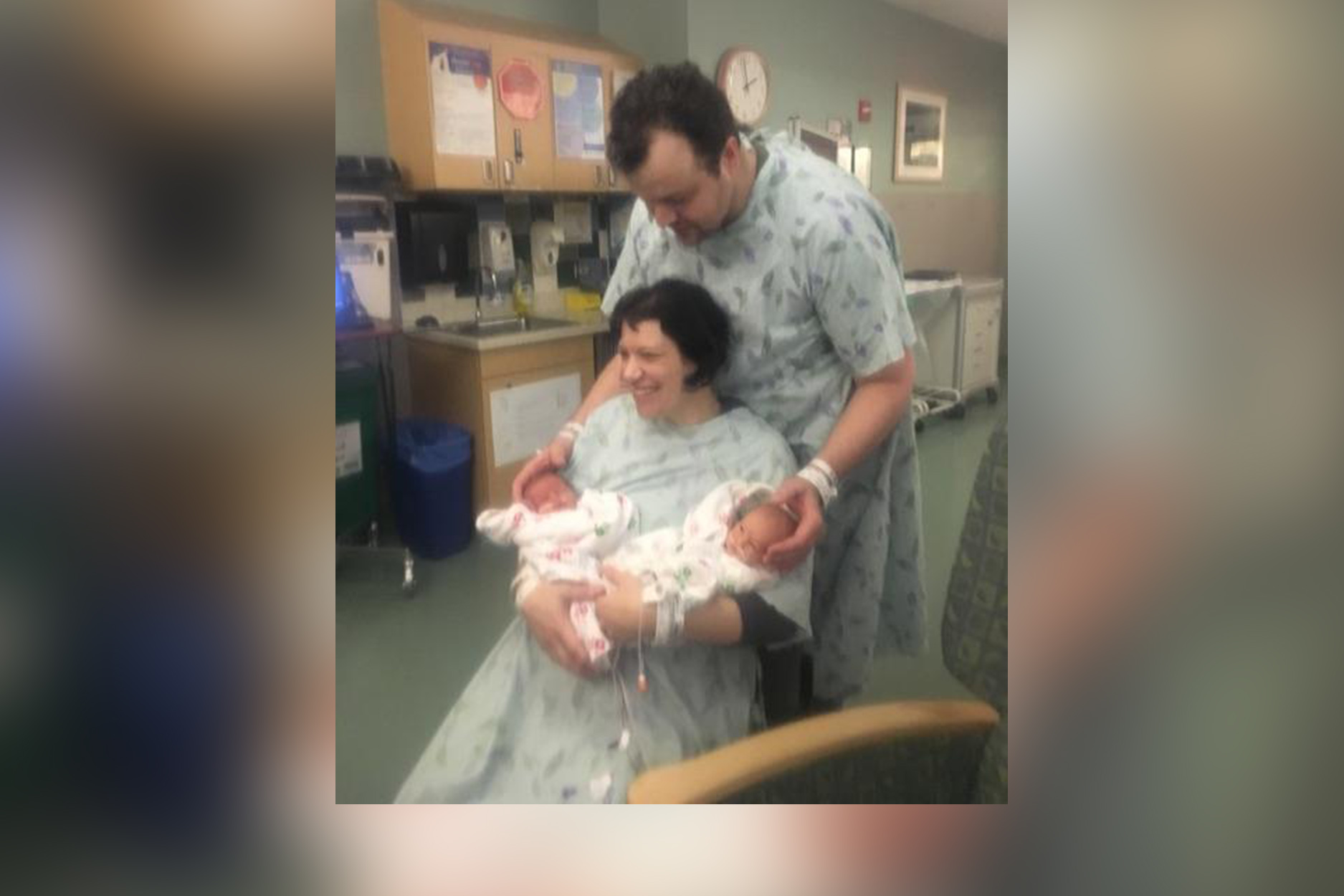Chicago Hospital Delivers 17 Sets of Twins in First Week of April
You know what they say. It's double the trouble if you're blessed with twins.

— -- As the saying goes, it’s double the giggles and double the grins, and double the trouble if you’re blessed with twins, which one hospital in Chicago has probably said very often this past week. The Advocate Children’s Hospital in Oak Lawn delivered 17 sets of twins just in the first week of April, hospital officials said.
“It’s kind of odd,” Jon Bertoletti, 37, told ABC News today. His wife, Amy Bertoletti, 38, gave birth to their identical twins, Molly and Estelle, on Tuesday at the hospital.
Dr. Brett Galley, a neonatologist in the neonatal intensive care unit at the hospital, told ABC News that this number of twin births is “a little bit out of the ordinary,” but could also be due to the fact that the hospital is a high-risk medical center that is used to delivering twins.
However, the average amount of twin births is around 10 sets a month, Galley said. “I’d be very surprised to see the amount of twins we had continue at this rate,” he added.
The hospital usually takes care of three to four sets of twins at a time between delivery and being in the neonatal intensive care unit. The recent flood of twin births has caused the NICU to get close to its maximum occupancy of approximately 57 newborns, Galley said, with the number currently in the “mid-forties.”
The last time Galley saw such high numbers “would be four to five years ago,” when the hospital delivered four sets of triplets in one week.
Most twins will go into the NICU after birth, Galley said, as they are typically prematurely born around 35 to 37 weeks old, “but it really depends.” He added that “There’s some issues that can issues that can occur before they’re born, especially if they’re sharing the same placenta or amniotic sac.”
When twins share the same placenta, they can be sharing blood cells, which can make their blood counts too high or too low. If they share the same amniotic sac, then the situation can be worse, Galley said, running the risk of problems with umbilical cord tangles.

The Bertoletti’s babies are currently in the NICU, due to fluid in their lungs. They were 36 weeks old when they were born via C-section. The hospital is waiting until the twins can eat on their own before they are discharged.
Twin births are usually seen more in older women, or first-time moms, as there is an “increased likelihood there might be fertility treatments involved.”
Jon Bertoletti’s brother and sister were fraternal twins, but he said that wouldn't necessarily increase the odds of his daughters being identical twins.
“It’s just a little bit out of the ordinary,” Galley said about the whole ordeal, adding, “It’s sort of a fun time in there. Most of these parents are pretty excited about having twins; most of these twins are doing well. It’s good to see that as well.”




